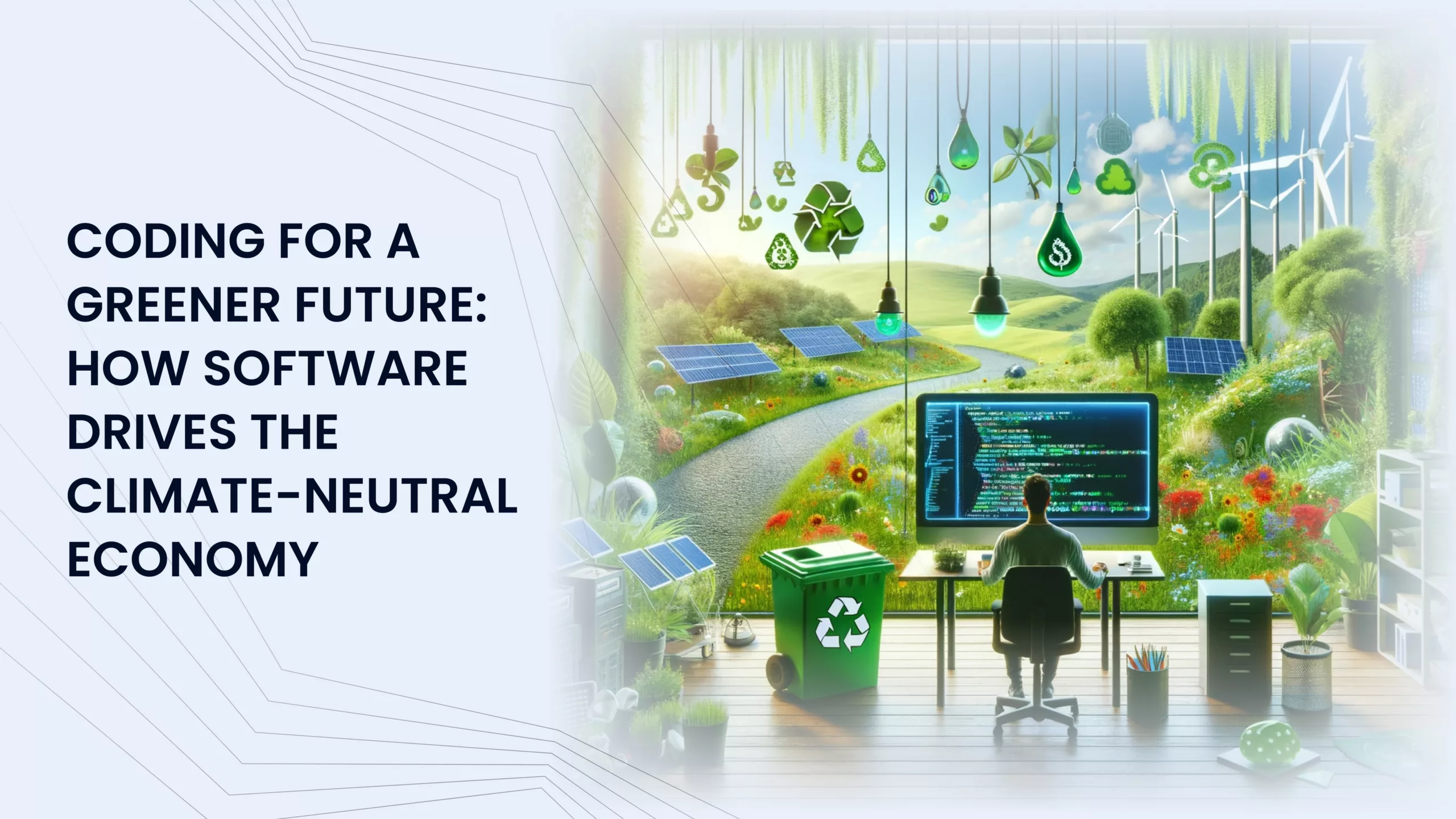
Software development isn’t just about flashy apps and social media platforms. It’s increasingly becoming a vital tool in the fight against climate change and the journey towards a climate-neutral economy. From optimizing electric vehicles to harnessing the power of quantum computers for sustainable agriculture, software is shaping a greener future.
Content:
- How can software development help with establishing a climate-neutral economy?
- Electric vehicle challenges and ways software can help overcome them
- How does software optimize renewable energy integration?
- Quantum computers and sustainable agriculture
- How can MWDN help you build a better future?
How can software development help with establishing a climate-neutral economy?
“Climate neutrality is about emitting less and absorbing more,” the European Council says. How exactly can software development help establish a climate-neutral economy? Here are just a few examples:
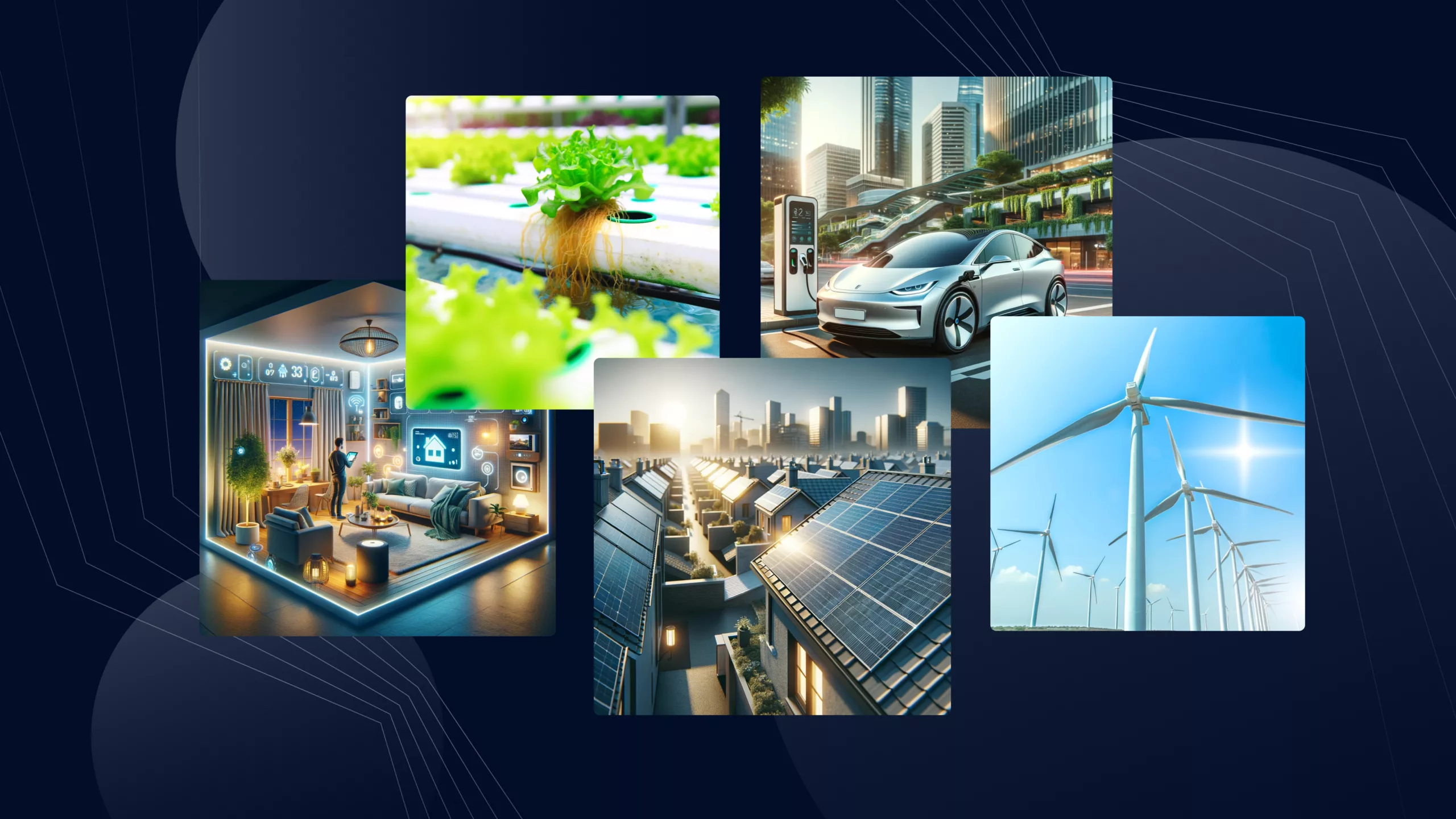
— Energy efficiency software monitors and optimizes energy use in buildings, factories, and power grids.
— Supply chain management software optimizes logistics and transportation routes, reducing fuel consumption and emissions associated with moving goods.

— Precision agriculture software can be used to analyze data on soil conditions, weather patterns, and crop growth.
— Smart grid management software controls energy flow from solar, wind, and hydropower sources.
— Demand response systems can be used to manage electricity demand based on real-time needs.
— Carbon footprint tracking and analysis help track carbon footprints and identify areas for improvement.
— Developing clean technologies means design, simulation, and optimization of next-generation clean technologies like electric vehicles, carbon capture systems, and energy storage solutions.
— Smart homes and buildings automate energy-saving features in homes and buildings, encouraging sustainable practices.
At MWDN, we’re passionate about collaborating on projects that contribute to a climate-neutral economy. If your project aligns with this goal, we encourage you to contact us. We offer flexible partnership options to help bring your vision to life.
Let’s talk in more detail about the most promising niches of software aimed at changing the climate situation – electric vehicles, renewable energy software, and quantum computing for sustainable agriculture.
Electric vehicle challenges and ways software can help overcome them
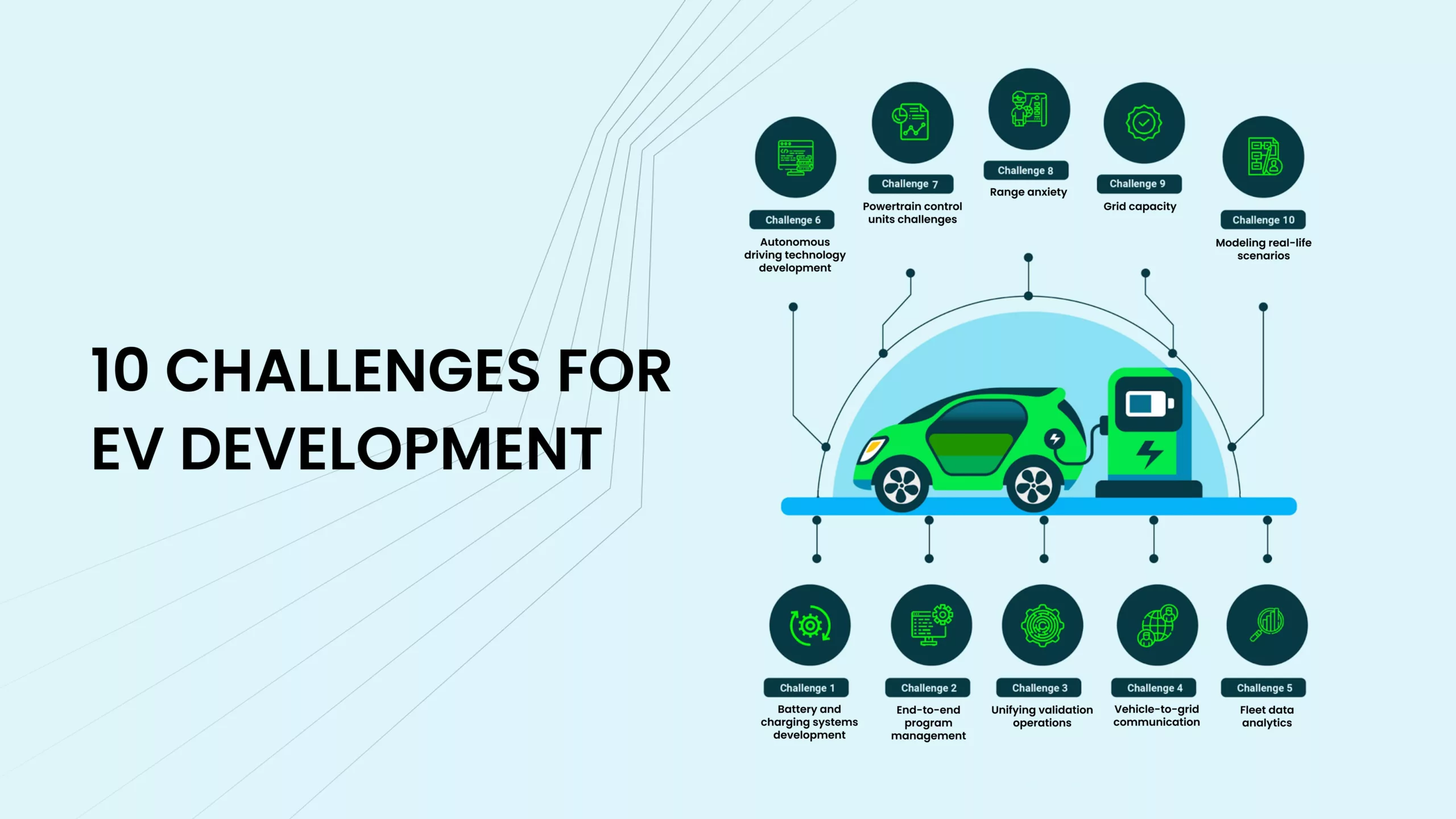
Electric vehicles are key to decarbonizing transportation. However, getting more people to use them depends on solving issues like worries about how far they can go on a charge and the need for more charging stations. McKinsey reports EV sales topped 10 million in 2022, a 50% jump. They forecast 40 million by 2030. This explosive growth demands a massive charger infrastructure build-out, or consumer adoption could stall. The US alone needs a tenfold increase by 2030 to keep pace.
Software developers are at the forefront of tackling these and other issues as they work on battery management systems, powertrain control units, Vehicle-to-grid communication, and autonomous driving technology.
Battery management systems (BMS)
The BMS acts as the brain of the battery pack, constantly monitoring and managing factors like temperature, voltage, and current flow. This ensures optimal battery health, maximizes range and prevents damage from overheating or overcharging.
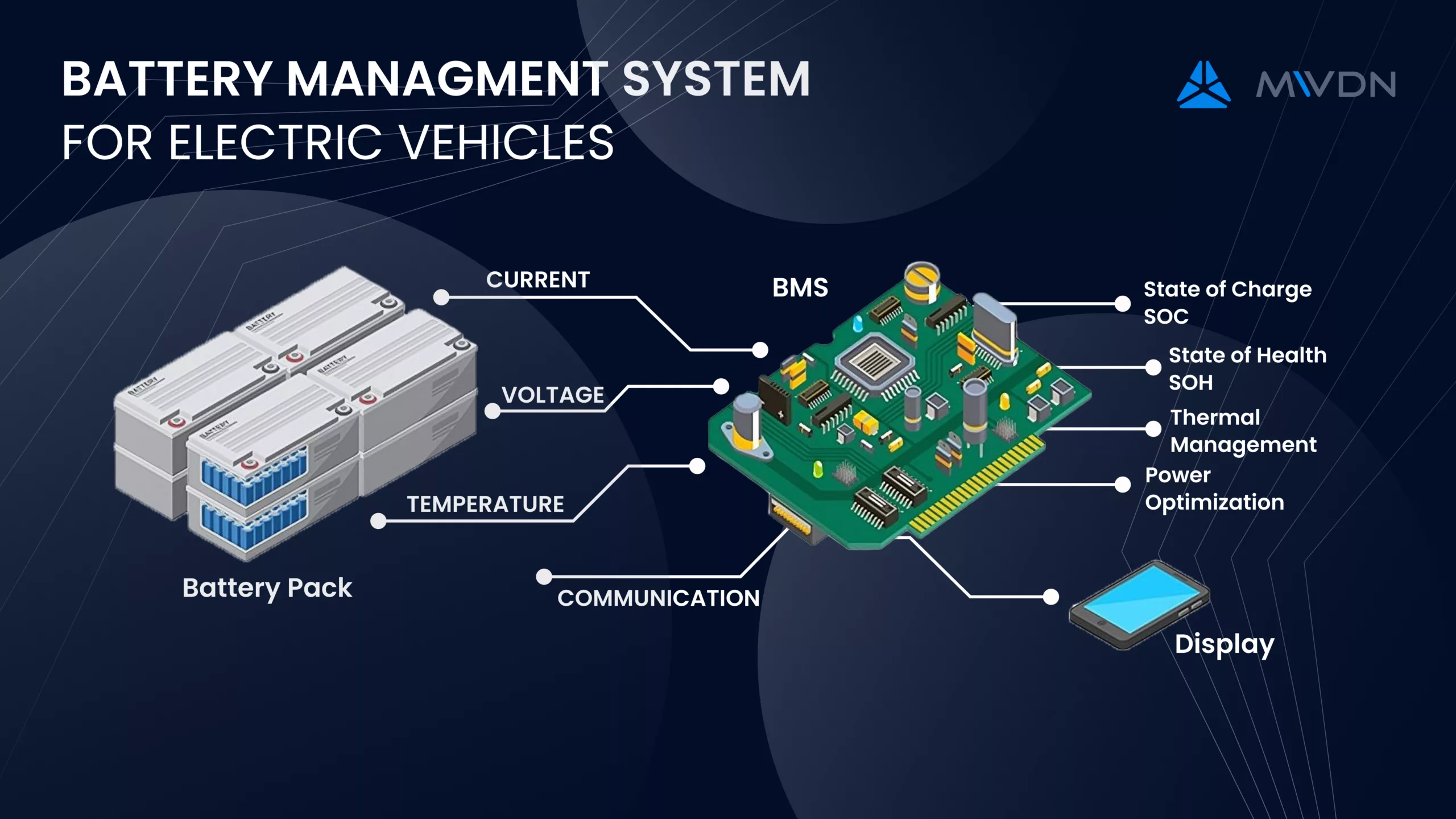
A study by the National Renewable Energy Laboratory (NREL) found that advanced BMS technology can improve battery life by up to 20%. Sophisticated software helps manage battery life cycles, optimize charging times, and extend vehicle range. Telematics data collected on battery performance can guide further research and development for efficient battery technology.
Powertrain control units (PCUs)
The PCU controls the electric motor, inverter, and other components of the EV drivetrain. It regulates power delivery, optimizes torque, and ensures smooth driving performance. As of today, Bosch, Continental, and Hitachi Automotive Systems are major players in developing advanced PCUs for EVs.
Autonomous driving technology
A study by Frost & Sullivan forecasts that the global market for automotive software will reach $82.9 billion by 2025, fueled partly by the development of autonomous driving technology for EVs.
While still in its early stages for consumer vehicles, self-driving technology has the potential to revolutionize EV transportation. Software advancements in areas like sensor fusion, path planning, and obstacle detection show promise for improved traffic management and reduced congestion, leading to further reductions in emissions.
Today, Tesla, Waymo (owned by Google), and Cruise (owned by General Motors) are at the forefront of developing autonomous driving software for EVs.
How does software optimize renewable energy integration?
In 2021, the global market for solar energy systems was worth $160.3 billion and is expected to grow at a rate of 15.7% every year from 2022 to 2030. This growth is mainly because more people want to use renewable energy instead of traditional energy sources, which is likely to increase the market size during this period.
The cost of solar energy systems has gone down, making solar energy a more attractive option for generating electricity. The prices of these systems are expected to drop even more in the future because of heavy investments in solar technology, making them cheaper than the coal or gas power plants in operation today. The need for different ways to generate electricity and reduce our reliance on fossil fuels is expected to increase the demand for these systems.

Source: Solar energy systems market size, share & trends analysis report, 2022 – 2030 by Grand View Research
Overall, solar energy is a cornerstone of the transition to a renewable energy future. But beyond the panels themselves, software development plays a role in optimizing solar power generation, integration into the grid, and overall system efficiency.
What challenges do software engineers face when trying to improve solar energy integration?
Solar panel optimization
Software can monitor and optimize the efficiency of solar panels based on weather conditions and sun angle. Software platforms collect data from sensors on solar panels, monitoring factors like temperature, voltage, and current output. This data is used to identify performance issues and optimize energy production.
Building integrated photovoltaics and design optimization
Software tools are used to model and simulate the performance of solar panels integrated into building designs. This allows architects and engineers to optimize the placement and orientation of solar panels for maximum energy generation while considering factors like building aesthetics and energy efficiency.
Maximum power point tracking (MPPT)
MPPT algorithms embedded in software continuously adjust the electrical output of solar panels to ensure they operate at their maximum power point under varying conditions like sunlight intensity and temperature.
Smart inverters and grid integration
Modern solar inverters are equipped with sophisticated software that converts the direct current electricity generated by solar panels into alternating current electricity compatible with the power grid. Additionally, these inverters can communicate with the grid and adjust power output based on demand, facilitating the smooth integration of renewable energy sources.
Solar forecasting and resource management
Software tools utilize weather data, historical generation patterns, and machine learning algorithms to forecast solar energy production. This information helps grid operators and energy providers integrate solar power more effectively and manage fluctuations in energy supply.
MWDN expertise in green roof construction
One of our favorite clients, iRoofing, offers innovative services to the roofing industry. For iRoofing, the MWDN team has created an app that simplifies the construction process, allowing users to evaluate the project’s extent, choose materials, visualize the building’s final appearance, and finalize service agreements.
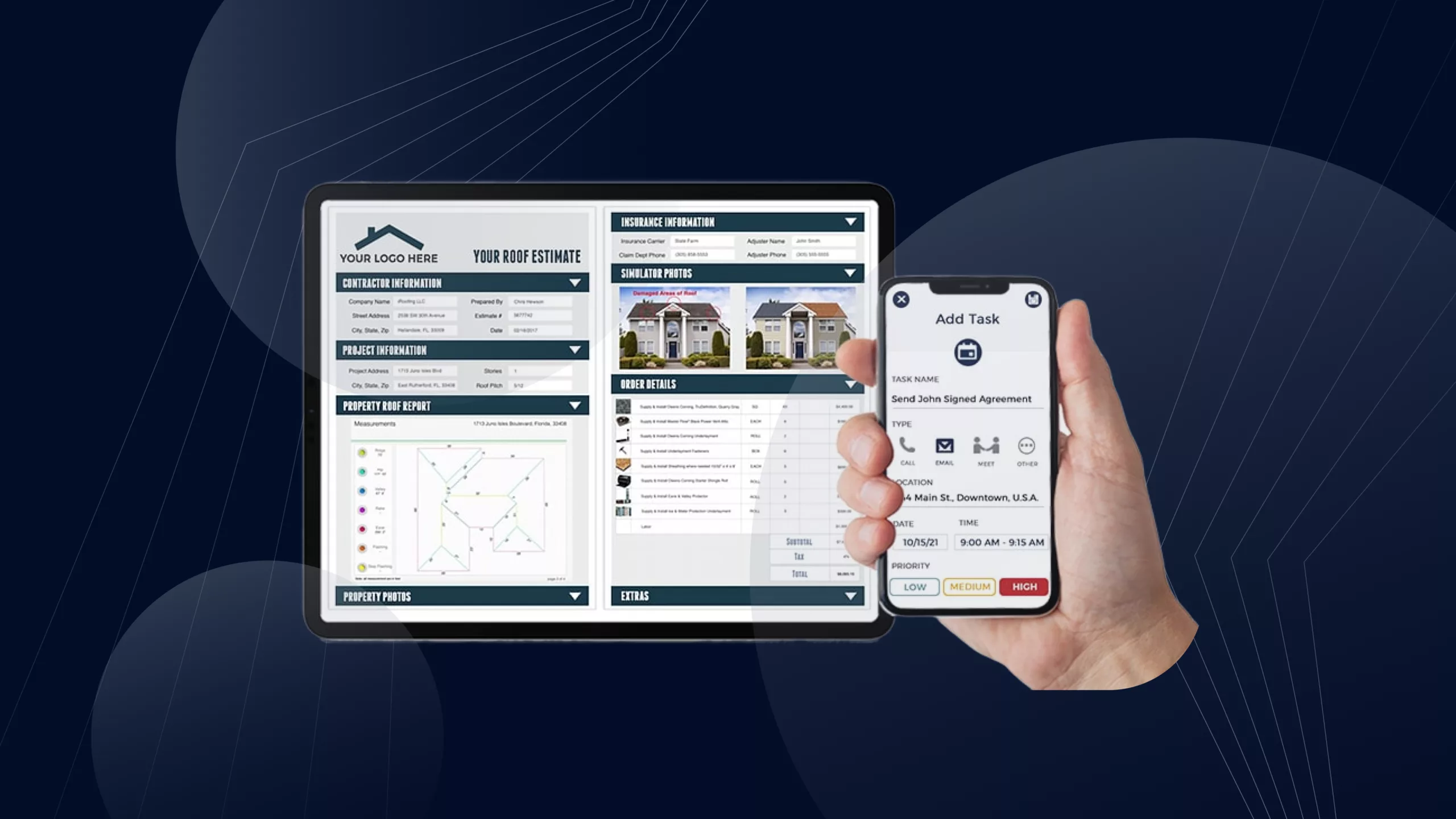
This app brings together designers, construction managers, and clients in one seamless digital space, enhancing communication between construction firms and their customers. iRoofing is dedicated to helping contractors save time, boost their sales, and grow their businesses.
What is more, today, it is focused on creating green roofs with integrated renewable energy options, including solar panels, and MWDN is happy to be a part of these changes!
Quantum computers and sustainable agriculture
While quantum computing for sustainable agriculture is still in its early stages, the potential is vast. The global agricultural software market is expected to reach $22.4 billion by 2025.
Unlocking the potential of quantum for agriculture
According to some studies, precision agriculture techniques enabled by advanced software and data analytics can increase crop yields by 30% while reducing water usage by 20%. Quantum computers, combined with this data-rich software environment, can take precision agriculture to the next level. By simulating complex interactions between soil, weather, and crop growth, they can help farmers optimize fertilizer application, water usage, and planting strategies for maximum yield with minimal environmental impact.
Check out what Dell Technologies offers already:
Optimizing breeding programs
Software can analyze genetic data of crops to develop new strains that are more disease-resistant, drought-tolerant, and require fewer resources. Developing new crop varieties that are disease-resistant, drought-tolerant, and require fewer resources is a time-consuming and resource-intensive process.
Existing software tools analyze genetic data to identify desirable traits in crops; however, quantum computers can analyze massive datasets of genetic information much faster and more efficiently than traditional computers. This can accelerate the development of new, sustainable crop varieties that require less water, fertilizer, and pesticides.
Sustainable resource management
Quantum computing can help optimize water usage and resource allocation in agriculture, leading to a reduction in the environmental footprint of food production.
Quantum computers can perform complex simulations of water flow, soil properties, and crop needs. This can help farmers develop more efficient irrigation strategies, minimizing water waste and maximizing resource utilization.
How can MWDN help you build a better future?
If you’re developing climate-neutral software and need support, MWDN is here to help. With over two decades of expertise in staff augmentation and IT recruitment, we specialize in quickly finding and hiring the tech talent necessary for demanding ecological projects. Explore our range of services, select the option that best fits your business requirements, and schedule a call with one of our managers to iron out all the details.
Content
- 1 How can software development help with establishing a climate-neutral economy?
- 2 Electric vehicle challenges and ways software can help overcome them
- 3 How does software optimize renewable energy integration?
- 4 Quantum computers and sustainable agriculture
- 5 How can MWDN help you build a better future?


